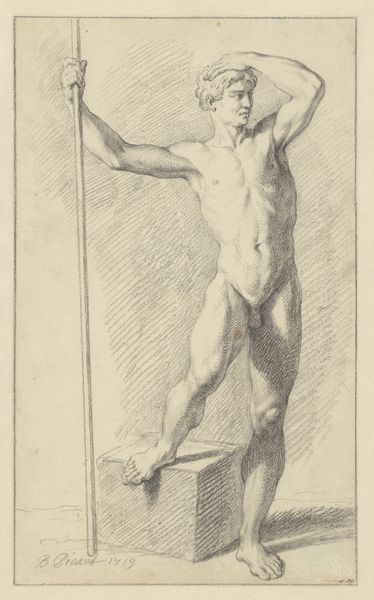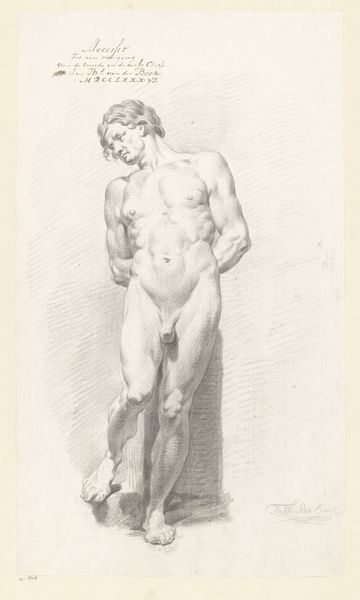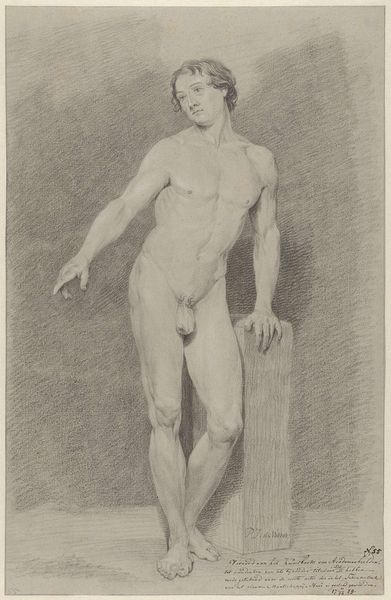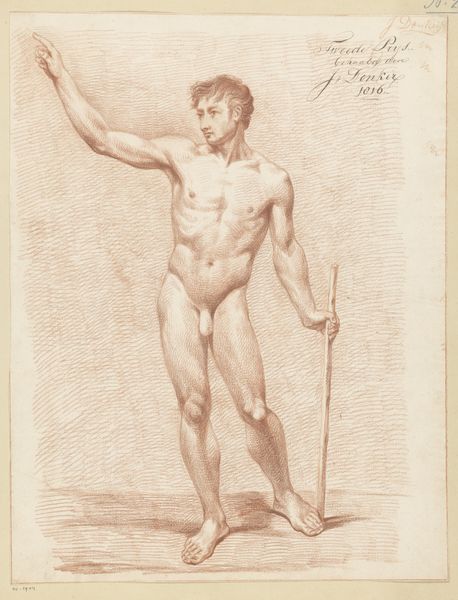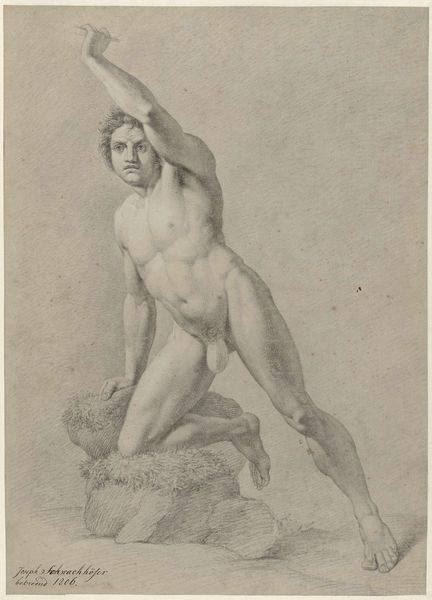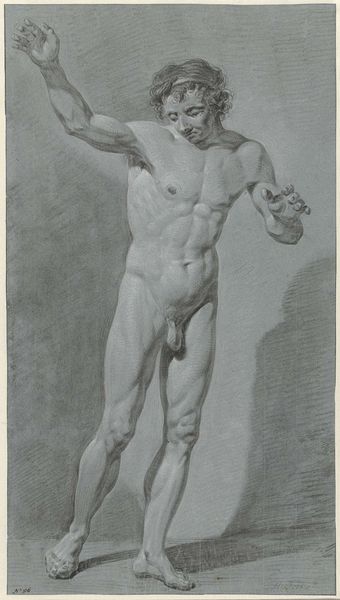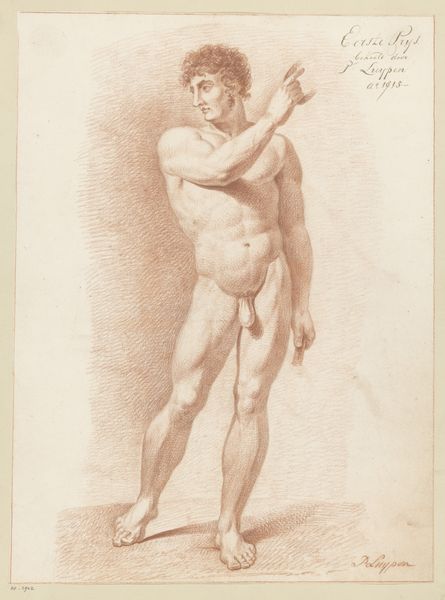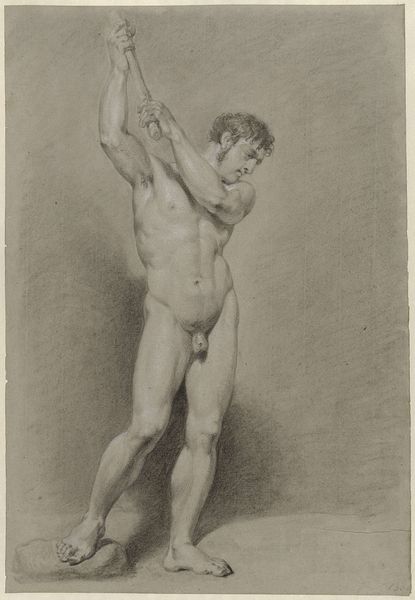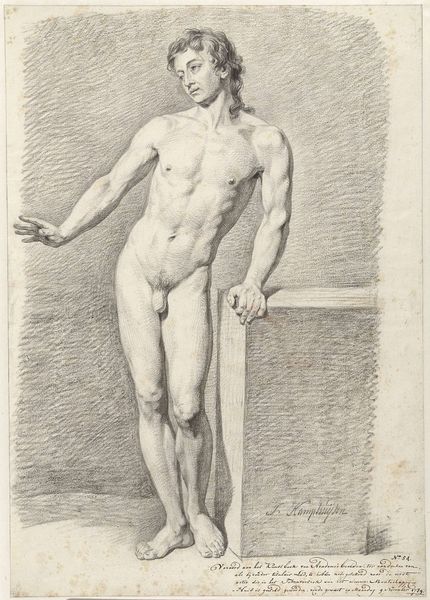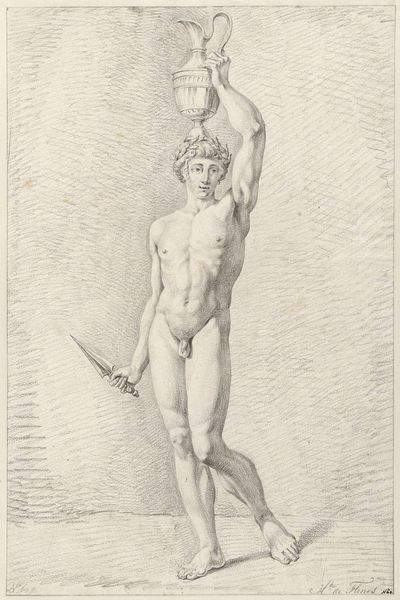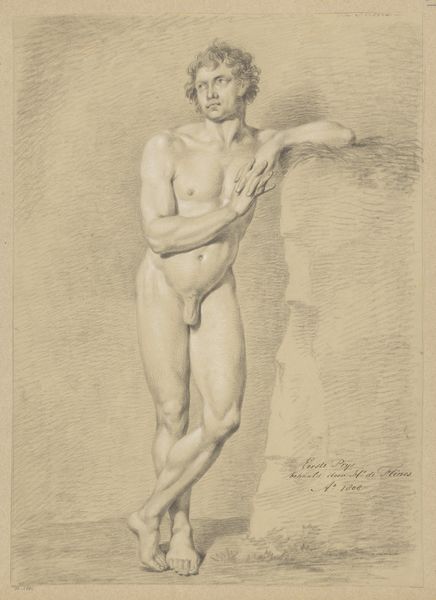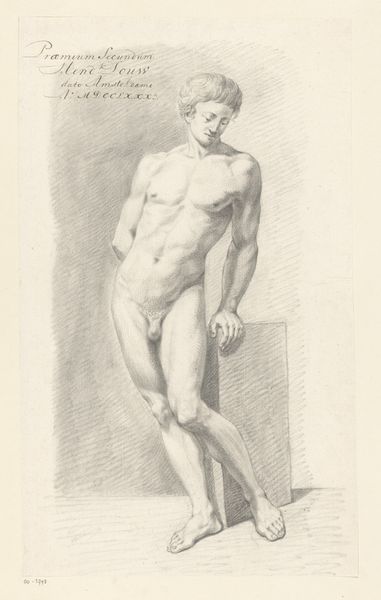
drawing, pencil, charcoal
#
portrait
#
drawing
#
neoclacissism
#
charcoal drawing
#
figuration
#
form
#
pencil
#
charcoal
#
academic-art
#
nude
Dimensions: height 558 mm, width 383 mm
Copyright: Rijks Museum: Open Domain
Curator: Before us, we have Jan Swart's drawing, dating from around 1779 to 1794, titled "Standing Male Nude with a Vase on His Head." It’s a powerful, almost imposing figure, wouldn’t you agree? Editor: Imposing, yes, but there’s something unsettling too. The greyscale charcoal lends it a clinical feel, like an anatomical study, but the vase… it adds an almost theatrical quality that doesn't quite sit right. Curator: That duality speaks volumes about the period. Swart was working during a time when Neoclassicism was the dominant artistic movement. Academic art was heavily emphasized, so drawings like this were produced in order to learn and teach human form. Editor: Absolutely, but it’s the materials, the labor, that captivate me. Charcoal is a humble, easily worked medium. Here, it serves to capture the musculature with precise detail, yet that vase disrupts the clarity, almost poking fun at the idealized form it sits upon. Is the model a common laborer trying to balance aristocracy on his head? Curator: That's a provocative interpretation! One could argue that the vase is there to serve artistic didactic purposes to enhance form, while others might suggest, that the image challenges prevailing socio-economic imbalances through allegorical presentation. Editor: Allegory maybe. And consider the act of drawing itself—the repetitive strokes, the blending, the physical act of rendering flesh, shadow, light with charcoal. Is the drawing elevating a simple model by displaying their body in service to another object or are we viewing the results of work at art school? Curator: That’s fascinating to think about, focusing on the actual labor involved. In this, Swart also gives viewers access into the studio. The drawing shows not just the idealized form but the construction of that ideal, and this in itself shifts the public's access and perceptions of artwork Editor: Precisely. It makes you question the power structures at play, both in the art world and in the world at large. The choice of charcoal, the stark depiction, is not neutral. It invites a critical examination of the values it presents, while acknowledging its raw construction as both skill and hard labor. Curator: Indeed. Considering it through this lens of production, materiality, labor, adds new layers of depth to an already intriguing artwork. I’ll certainly be contemplating that further. Editor: It's not just about what we see, but how it came to be and what it signifies about those invisible processes of creation and consumption, in 18th century Dutch society and in the art market today.
Comments
No comments
Be the first to comment and join the conversation on the ultimate creative platform.

